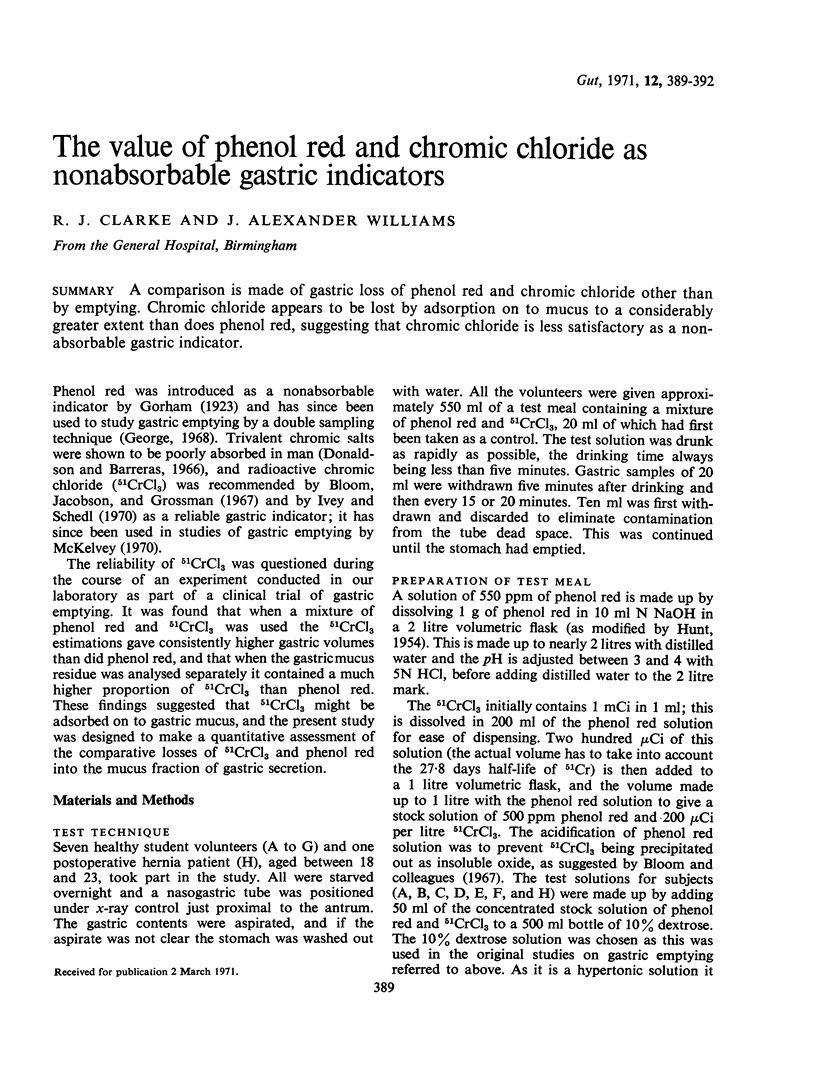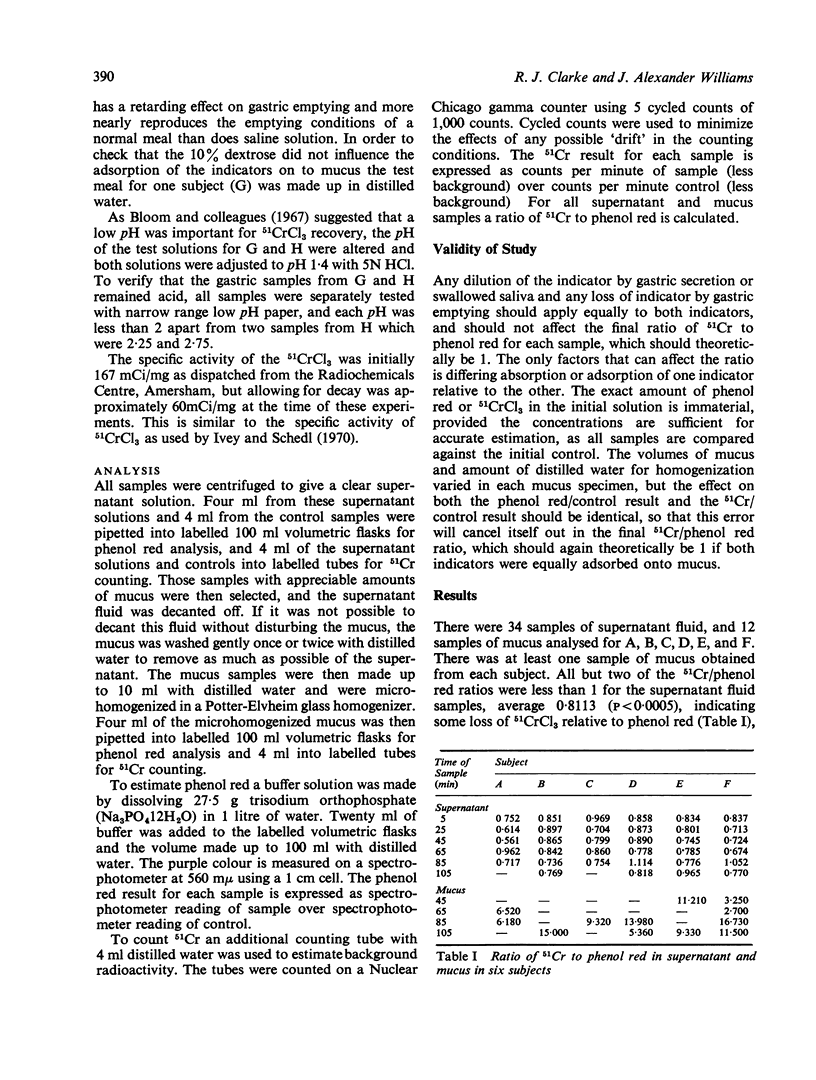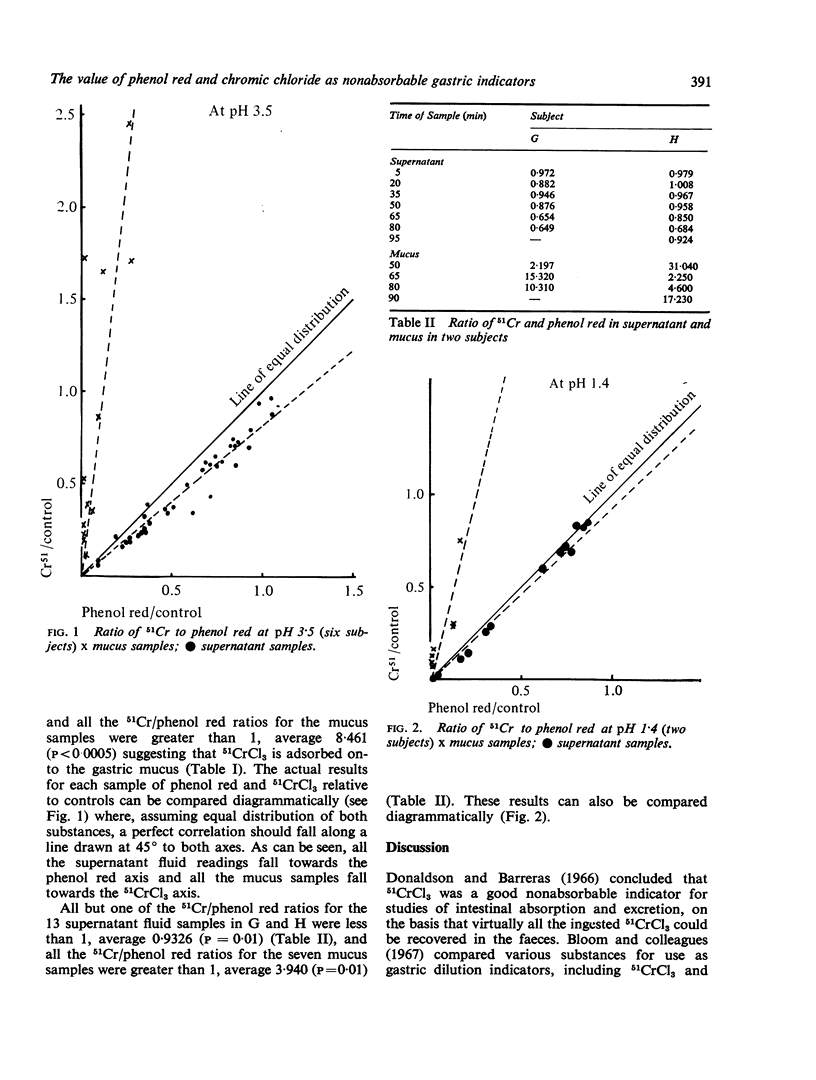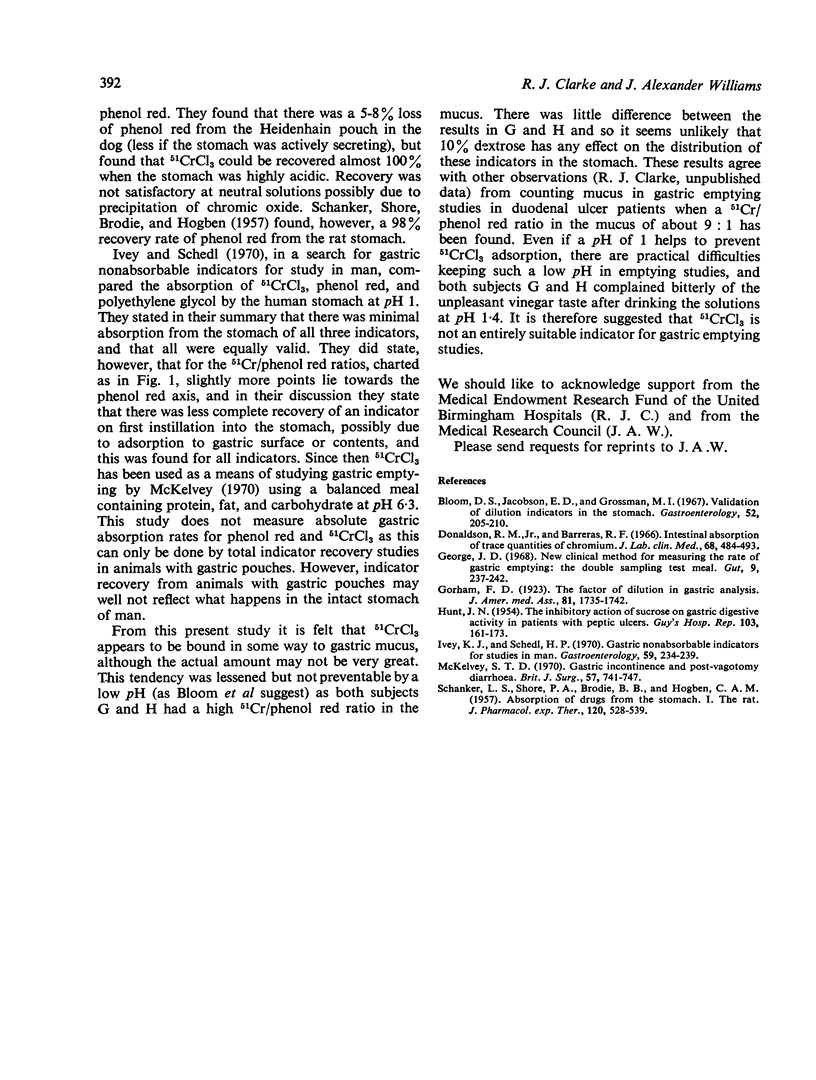Abstract
A comparison is made of gastric loss of phenol red and chromic chloride other than by emptying. Chromic chloride appears to be lost by adsorption on to mucus to a considerably greater extent than does phenol red, suggesting that chromic chloride is less satisfactory as a nonabsorbable gastric indicator.
Full text
PDF



Selected References
These references are in PubMed. This may not be the complete list of references from this article.
- Bloom D. S., Jacobson E. D., Grossman M. I. Validation of dilution indicators in the stomach. Gastroenterology. 1967 Feb;52(2):205–210. [PubMed] [Google Scholar]
- Donaldson R. M., Jr, Barreras R. F. Intestinal absorption of trace quantities of chromium. J Lab Clin Med. 1966 Sep;68(3):484–493. [PubMed] [Google Scholar]
- George J. D. New clinical method for measuring the rate of gastric emptying: the double sampling test meal. Gut. 1968 Apr;9(2):237–242. doi: 10.1136/gut.9.2.237. [DOI] [PMC free article] [PubMed] [Google Scholar]
- HUNT J. N. The inhibitory action of sucrose on gastric digestive activity in patients with peptic ulcer. Guys Hosp Rep. 1954;103(2):161–173. [PubMed] [Google Scholar]
- Ivey K. J., Schedl H. P. Gastric nonabsorbable indicators for studies in man. Gastroenterology. 1970 Aug;59(2):234–239. [PubMed] [Google Scholar]
- McKelvey S. T. Gastric incontinence and post-vagotomy diarrhoea. Br J Surg. 1970 Oct;57(10):741–747. doi: 10.1002/bjs.1800571012. [DOI] [PubMed] [Google Scholar]
- SCHANKER L. S., SHORE P. A., BRODIE B. B., HOGBEN C. A. Absorption of drugs from the stomach. I. The rat. J Pharmacol Exp Ther. 1957 Aug;120(4):528–539. [PubMed] [Google Scholar]


